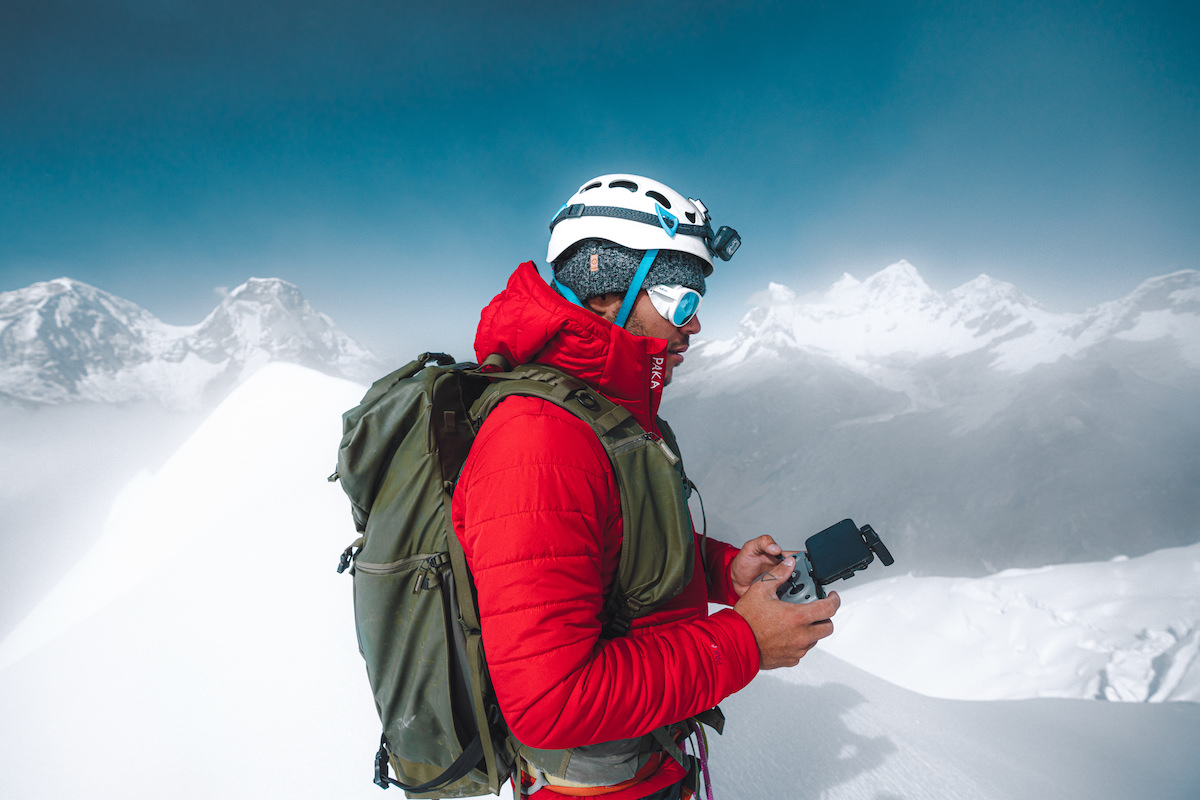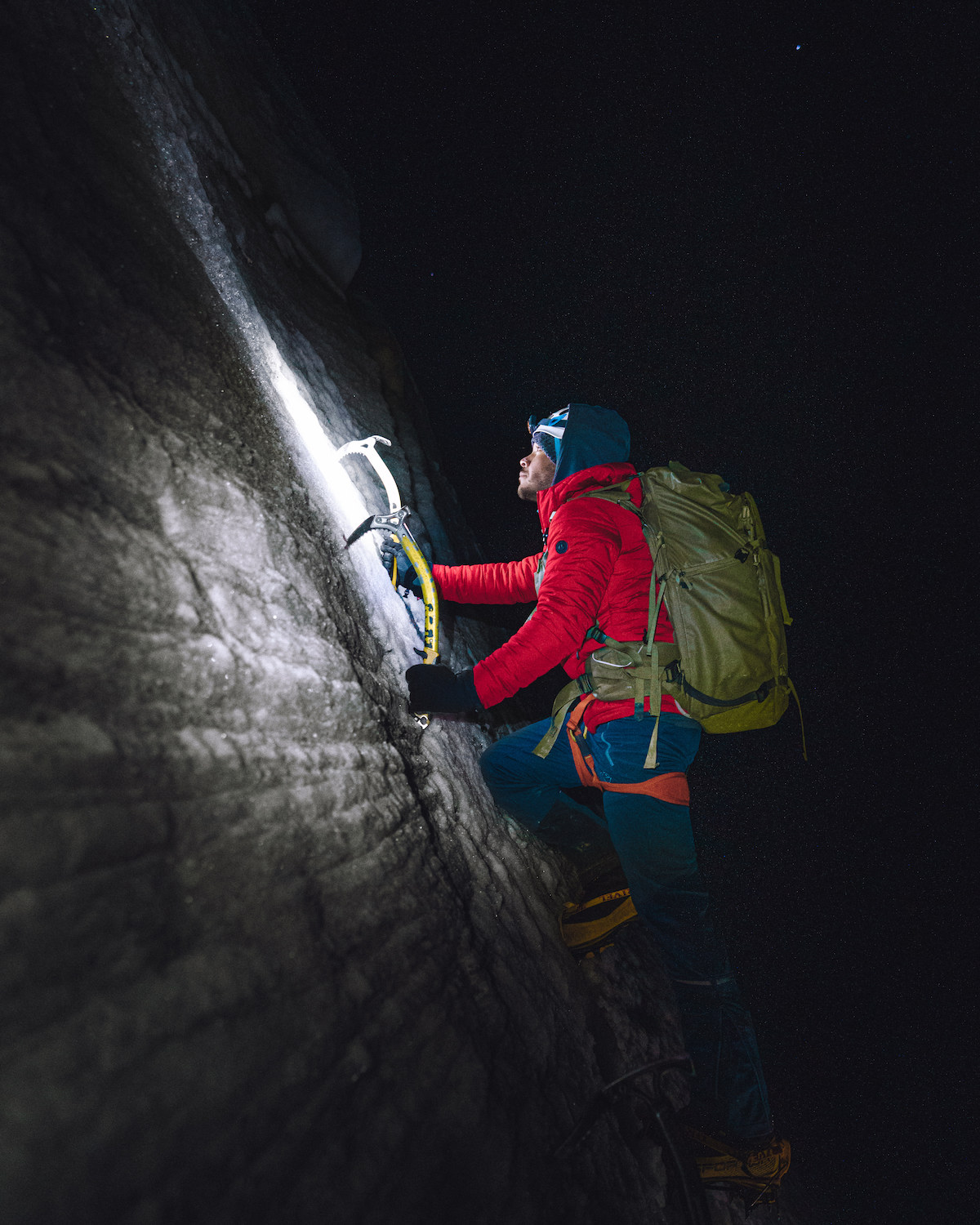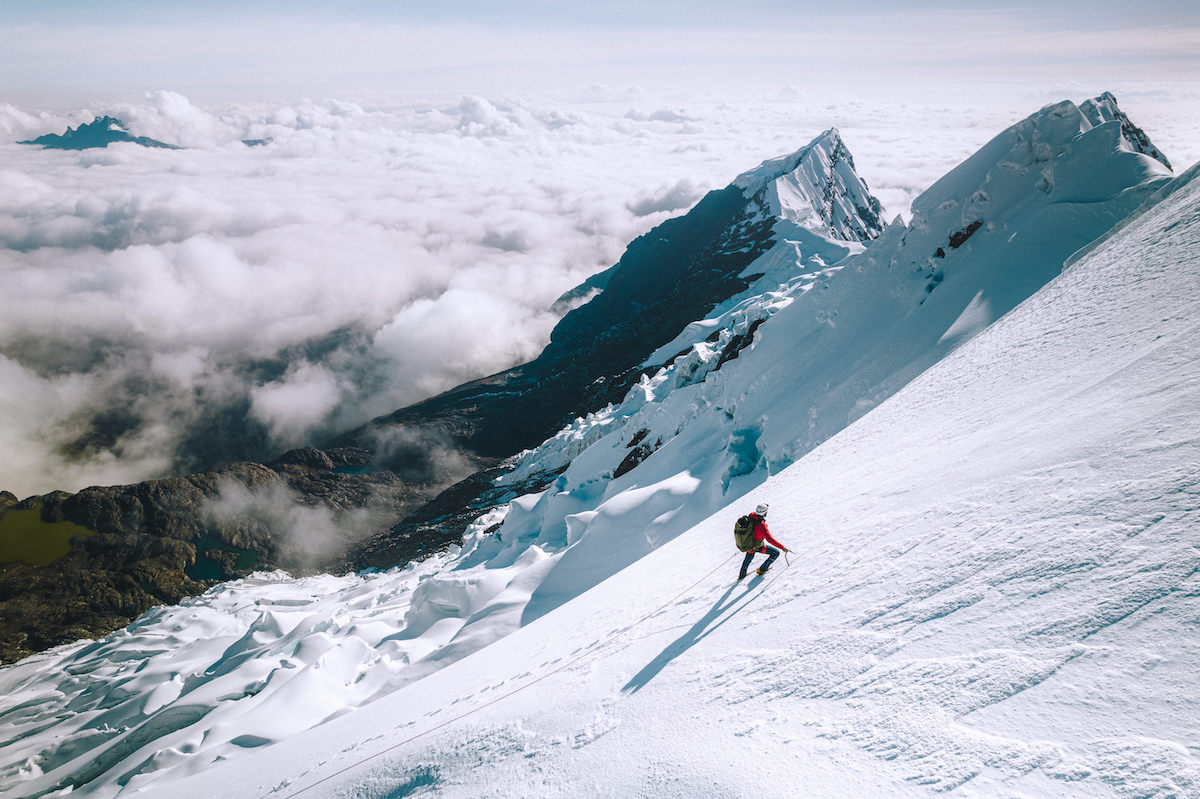By Kris Cody, Founder of Paka Apparel
Bumping along the narrow road to the foot of the mountain, my heartbeat seems to match the swaying of our vehicle: rapid and unsteady with anticipation.
“When we repel, we will always go one at a time.”
Listening to Jose describe the summit as we ride into the Huascaran National Park is surreal. This trek has been in the making for years, and here we are. The three of us – Jose Mostajo, a renowned Peruvian mountaineer and photographer, Noah Turpo Cruz, a top-tier adventure photographer; and myself, a science nerd and outdoor enthusiast. Climbing Yanapaccha is the culmination of each of our individual life passions and our shared love and respect for the environment. When we started planning the summit trip to test Paka’s new insulation technology, I didn’t know if we’d be able to make it work. It was October 4th. Peak trekking season had already passed and each week storms and melting ice made the trek increasingly dangerous.
Summiting Yanapaccha is no easy feat and the fact that Noah and I had no previous ice climbing experience was weighing on our minds. It’s a technical climb requiring the right gear, guide and grit. The final jacket prototype, filled with our new insulation, was completed just in time for this expedition. It was our last possible window of opportunity to summit Yanapaccha and put our new PAKAFILL® jacket to the ultimate test.

After arriving at the trailhead by bus we carried our gear to base camp. By the time we made it to our camp, it was hailing. This was the first real test for the jacket. After the storm settled we anchored into the ice and practiced repelling – aligning as a team for the day ahead and further testing the jacket’s water resistance against the wet ice.
That night at camp we barely slept and got up at 2am. The moonlight illuminated the snow around us. A clean blanket of crisp snow invited us to take the first steps of our ascent. We pulled on our gear and followed the route set by Jose and our guides. The line they set in the snow was our only assurance to avoid potential crevasses. I found myself settling into a meditative state where all other thoughts beyond surviving were whipped away by the harsh wind.
After a short trek through the moraine, we reach the foot of a glacier. We put on our crampons and pulled out pickaxes to ascend the four meters of wet ice. These were the moments I’d been grappling with when imaging this ascent, something so technical that each move is crucial for the wellbeing of the whole team. After the ice pitch, we traverse across the broken glacier, while maintaining tension along the ropes that hold us together. If one person falls into a crevasse, that tension is what keeps us alive. As the glacier steepens, the snow becomes faceted and harder to climb. I can see the glow of the mountain and we quicken our pace to make it up in time for sunrise. Each step is strategically placed. Noah drops a mitten and in an instant we watch it slip 100 meters down the mountain along the slick ice.
When we reached the ridge, the sun hit our faces. There was a stillness that filled our presence and time seemingly paused. Looking out, we were surrounded by neighboring mountains. Thin crisp air filled my lungs and the realization of what we had just accomplished set in.

After repelling and hiking down to the base of the mountain, we removed our gear. There was an electric buzz among all three of us, masking our exhaustion. Only from the base can we see how exposed we were, accentuating how tremendous this expedition truly was. We now have proof that PAKAFILL® insulation has a place in the outerwear industry as a practical alternative option for functional outdoor gear.
The journey continues as we continue to push this sustainable material to market and encourage those who use science to work alongside earth to replace outdated methods that rely on unnatural and unethical practices. As Noah would say “Follow a path for nature.”
About the Author
Kris Cody is the Founder of Paka Apparel. Since 2017, he has been working with Peruvian communities in the province of Cusco to develop high performance activewear made with sustainably sourced alpaca fiber. To date, his company has employed over 100 Quechua women weavers fleeing domestic gender-based violence, has sponsored full ride university scholarships to six young Peruvian women, has built a traceability program that enables customers to see exactly where the alpaca fiber in their product was shorn and ensures the most humane alpaca shearing practices. Until now, Paka has been known by loyal customers and fans as a socially and environmentally conscious brand that sells high quality thermal socks, base-layers, shirts, sweaters, hoodies and hats.
In this story Kris provides a glimpse into the ultimate performance test for Paka’s most innovative product yet, the PAKAFILL® jacket. This expedition proved that the warmest ethically-sourced insulation in the world, PAKAFILL®, made from alpaca fiber, has a place in the outwear industry as a viable alternative to synthetic and down insulation.



